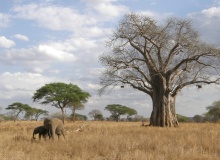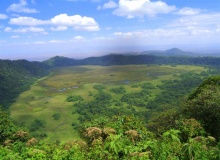Tanzania
Dar es Salaam | Zanzibar | Arusha
From lazing on idyllic beaches to trekking through barren landscapes guided by a Maasai warrior
Situated squarely between Cairo and Cape Town, Tanzania could easily be content to flaunt its awe-inspiring natural wonders, which include Mount Kilimanjaro, Serengeti National Park, Ngorongoro Crater and Zanzibar, among others. Resonating with hints of the wild and exotic, these five alone are reason enough to justify packing your bag and heading off to Tanzania But the country is also justly proud of its role as healer and mediator in a troubled part of the world; many visitors who fly into Arusha on their way to safari are unaware of its reputation as the Geneva of Africa.
Within the space of several hours, it’s possible to go from lazing on idyllic beaches to exploring moss-covered ruins of ancient Swahili city-states; from climbing mist-covered slopes in the Southern Highlands to trekking through the barren landscapes around Ol Doinyo Lengai, guided by a spear-carrying Maasai warrior. Yet, despite its attractions, Tanzania has managed for the most part to remain unassuming and low-key. It has also remained enviably untouched by the tribal rivalries and political upheavals that plague many of its neighbours, and this – combined with a booming tourism industry – makes it an ideal choice for both first-time visitors and Africa old hands.
Northern Tanzania is world famous for its spectacular scenery and wildlife. The escarpments and volcanoes of the Great Rift Valley form a dramatic backdrop to the game-covered plains below. Snow-capped Kilimanjaro, Africa's highest mountain at 5895m, is a mecca for trekkers and mountaineers.
The region's national parks are a haven for huge concentrations of animals and birdlife. The Serengeti alone has nearly 2 million wildebeest and zebra which migrate along age-old pathways, followed by lion, cheetah, leopard, hyena and jackal. The famous Ngorongoro Crater is a huge volcanic caldera where 25,000 animals live in a setting of unparalleled grandeur. Maasai tribespeople have inhabited this region for hundreds of years, herding their cattle and living in harmony with the wildlife.
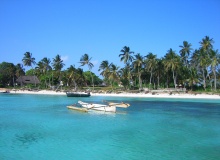
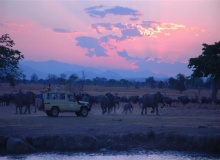
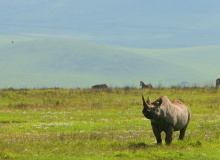
Dar es Salaam
Present day Dar Es Salaam has been influenced by myriad of Sultans, the Germans and the British. The city started as a fishing village in the mid 19th century, is now Tanzania's largest city, and has become one of East Africa’s most important ports and trading centres.
With its great atmosphere, mix of African, Muslim, and South Asian influences, picturesque harbour, beaches, chaotic markets, and historical buildings, it is well worth more time than merely the time between flights.
Located on a natural harbour on the Indian Ocean, it is the hub of the Tanzanian transportation system as all of the country's main railways and several highways originate in or near the city. Its status as an administrative and trade centre has put Dar es Salaam in position to benefit disproportionately from Tanzania's high growth rate since the year 2000 so that by now its poverty rates are much lower than the rest of the country.
WHEN TO TRAVEL to Dar es Salaam
The temperatures in Dar es Salaam are hot all year round and it can get very humid especially between March and May when the rains are at their heaviest. The best time to travel would be between June and September after the rainy season and slightly cooler temperatures.
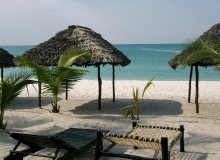
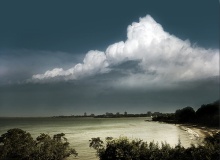

Zanzibar
The islands off Tanzania's coast feel exotic and the most well known of these is Zanzibar, 70 km north of Dar Es Salaam. In Stone Town, on Zanzibar, a labyrinth of narrow streets—mere passageways in some places—winds between ageing buildings (a blend of Portuguese, East Indian, Persian and Omani Arab architecture). The open market, where modern goods are mixed in with foodstuffs and more traditional fare, has the feeling of a bazaar. Cars and satellite dishes and mobile phones abound, but the clamor of modern life is halted abruptly by the Muslim call to prayer. The island smells exotic, too: The scent of spices is always in the air—these islands provide most of the world's cloves.
Among the sights in Stone Town are the sultan's palace, the old Arab fort, built to defend against the Portuguese around 1700, two cathedrals and several mosques. On a stroll, be sure to watch the Ngalawas outrigger sailboats in the harbour. An excursion can be made to Mangapwani, which was a slave hole—a large underground cave where slaves were kept. (Get a guide to show you where it is, as it is not easy to find.)
The population of Zanzibar and the archipelago is largely Muslim, so women should dress conservatively. Swimwear should be worn only at the beach. Be aware that, during the Islamic holy month of Ramadan, very few places on the island sell food or drink during the day. And don't take photographs of island residents without permission.
WHEN TO TRAVEL to Zanzibar
Zanzibar has a tropical climate being a few degrees off the Equator. April through to June is Monsoon season so is best avoided, although the rains do taper off in June. The best time to visit is July though to October where it is dry and temperatures average a pleasant 25 degrees.


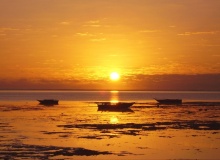
Arusha
Arusha could be any small town in sub-Saharan Africa—dusty, crowded, and forgettable. A couple of pleasant features do distinguish it, however: potted plants line the pot-holed streets (put there by the plant nurseries just behind the foorpaths), and on a clear day, you can see Mt. Meru, Africa's fifth-highest mountain at 4,556 meters looming in the distance.
The town is bisected by the Nauru River. The more modern part is to the east of the river where most of hotels, safari companies, and banks are located; west of the river is where the bus station and main market are. Most people spend an overnight here either coming or going to the national parks. There's not really much to see and do in Arusha apart from shopping.
If you want to pick up gifts and curios, then stop by Arusha's Cultural Heritage Centre (Serengeti Rd.). It's one of the best curio shops in Tanzania and is only 3 km out of town. You can buy carvings, jewellery, including the gemstone Tanzanite, colourful African clothing, local music, and much more. Royalty, politicians and other glitterati have all stopped to pick up last minute gifts and souvenirs here.
WHEN TO TRAVEL to Arusha
The best time to visit Arusha and to climb Mt Meru is between October and February. A good time is also between May and October. The rainy season falls between March and May and the temperatures are pretty constant through the year.
